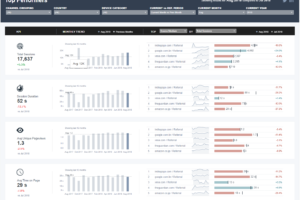The future of data and analytics technologies is likely to be shaped by a number of factors, including advancements in artificial intelligence (AI) and machine learning, the increasing amount of data being generated and collected, and the growing need for businesses to make data-driven decisions.
AI and Machine Learning: AI and machine learning are set to become increasingly important in data and analytics, enabling organizations to analyze large amounts of data in real-time and make predictions about future trends and events.
Cloud Computing: Cloud computing is becoming increasingly popular for data and analytics as it allows for scalable, flexible, and cost-effective data storage and processing.
Edge Computing: Edge computing allows for data processing and analysis at the source of data, rather than in a centralized location. This can enable faster processing and decision making, especially in IoT and industrial applications.
Streaming Analytics: Streaming analytics is a technology that allows organizations to process and analyze data as it is generated, in real-time. This can be used for real-time fraud detection, customer behavior analysis, and other use cases.
Natural Language Processing (NLP): NLP enables computers to understand, interpret and generate human language, which can be used to extract insights from unstructured data such as text, voice, and image.
Blockchain: Blockchain technology can be used to secure, track, and manage data, and can enable secure sharing of data between organizations.
Internet of Things (IoT): IoT technology is generating huge amounts of data, which can be analyzed to improve operations, optimize processes, and gain new insights.
Augmented Analytics: Augmented analytics automates the data discovery process, making it easier for non-technical users to access and analyze data.
In conclusion, advancements in technologies such as AI, machine learning, cloud computing, edge computing, streaming analytics, natural language processing, blockchain, IoT and augmented analytics are set to drive the future of data and analytics. These technologies will enable organizations to process and analyze data in real-time, make better data-driven decisions, and gain new insights.





